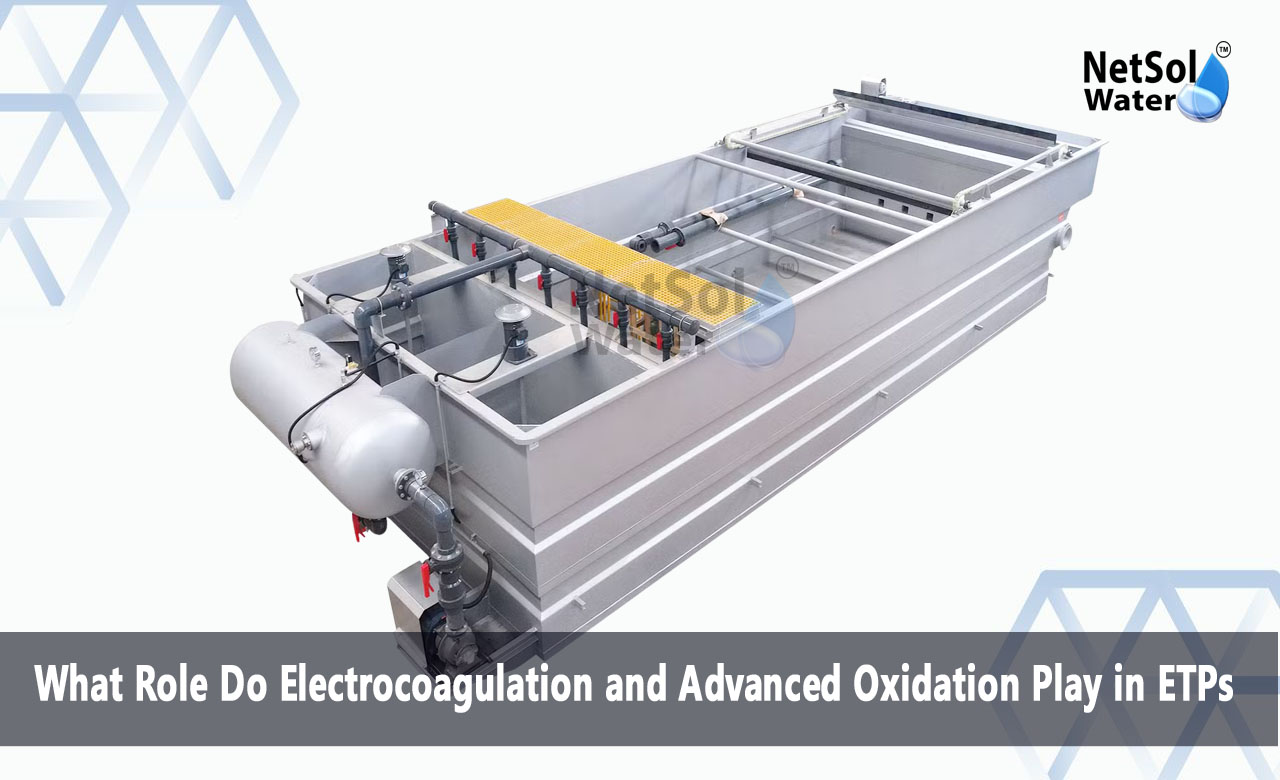What Role Do Electrocoagulation and AOP in ETPs?
Effluent treatment plants must handle a wide range of pollutants. Industries must manage high loads of suspended solids and toxic compounds. Traditional methods often fall short in meeting strict discharge standards. Electrocoagulation and Advanced Oxidation offer strong paths to remove hard to treat contaminants. These approaches complement each other in a treatment train. Electrocoagulation removes heavy metals and suspended matter. Advanced Oxidation breaks down complex organics into simpler non toxic forms. Together they deliver a higher level of treatment that meets modern regulations.
Electrocoagulation in Effluent Treatment
Electrocoagulation offers a strong method to clear pollutants from water in ETPs. Let us have a look at some key features that make it effective.
Mechanism of Electrocoagulation
Electrodes made of iron or aluminium release ions when an electrical current passes through the water. These ions form coagulants in situ. The coagulants bind to particles in the water. The bound particles grow and settle out of the liquid. This process removes solids and harmful metals from the stream.
Benefits of Electrocoagulation
Electrocoagulation can cut down sludge volume compared to chemical dosing. It requires no added chemicals. The process runs under mild operating conditions. It works on a range of contaminants in one step. Plants can save on storage and handling of reagents.
Applications of Electrocoagulation
Many industries use electrocoagulation to treat oil water mixtures for reuse. Tanneries apply it to remove chromium and dye waste. Food processors adopt it to handle high strength organic loads. Each link in the ETP chain gains from its simple design and low footprint.
Advanced Oxidation Processes
Advanced Oxidation adds another layer of cleaning power after coagulation. Let us have a look at some elements that drive its success.
Principle of Advanced Oxidation
Advanced Oxidation uses strong radicals to break down complex molecules. Hydroxyl radicals form from hydrogen peroxide under UV light or ozone. These radicals attack pollutants at the molecular level. They transform them into simple acids water and carbon dioxide.
Types of AOP Technologies
Ozone and hydrogen peroxide combine in many systems to boost radical yield. UV lamps energize peroxide solutions to form radicals on demand. Fenton reactions use iron catalysts with peroxide to spark oxidation. Each method adapts to the flow and contaminant profile in the plant.
Outcomes of AOP Treatment
AOP can remove recalcitrant compounds that resist biological processes. It cuts down colour and odour in treated water. It prevents the build up of toxic byproducts in the final discharge. Facilities find it easier to comply with tight limits for micro pollutants.
Integration into Effluent Treatment Plants
A combined system links Electrocoagulation and Advanced Oxidation in a smooth flow. Let us have a look at some integration steps that boost plant performance.
Combined Treatment Framework
Raw effluent enters the electrocoagulation unit first. It moves to a clarification tank where flocs settle out. The clarified water then passes into an oxidation reactor. There the water meets peroxide or ozone under UV exposure. Each step builds on the one before to reach a clean discharge.
Operational Considerations
Operators monitor current density in the electrocoagulation cell to keep metal release steady. They track peroxide dosing in the oxidation stage to match pollutant load. They adjust hydraulic retention times in each reactor to get full contact. Good control ensures each unit works at its peak.
Performance Outcomes
Plants report up to a ninety nine percent drop in turbidity and metal content. They cut down chemical use by avoiding large scale acid base dosing. They achieve better removal of hard to break down compounds. These gains lower costs and shrink the overall plant footprint.
Conclusion
Electrocoagulation and Advanced Oxidation offer a clear path to improve ETPs. These methods boost the removal of solids, metals and organics. They help plants meet tougher standards with less chemical storage. If you want to learn more about Electrocoagulation and Advanced Oxidation in your effluent treatment plant, please get in touch today or request a consultation.
Contact Netsol Water at:
Phone: +91-9650608473, Email: enquiry@netsolwater.com



